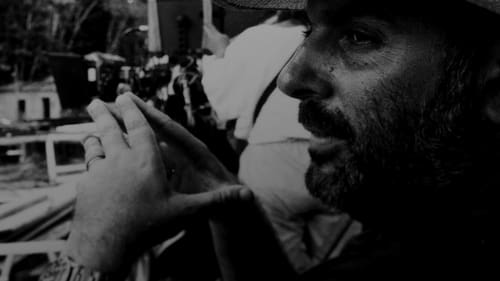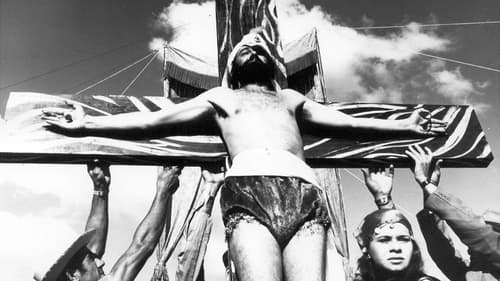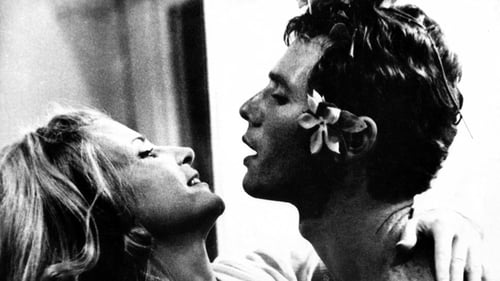Jorge Bodanzky
Birth : 1942-01-01, São Paulo, São Paulo, Brazil

Director

Still Photographer
Besieged by cancer and nearing the end, the genius Argentine-Brazilian filmmaker Héctor Babenco (1946-2016) asks Bárbara Paz, his wife, for one last wish: to be the protagonist of his own death.

In 1965, a year after the military coup in Brazil, an oasis of freedom opened in the country's capital. The Brasília Film Festival: a landmark of cultural and political resistance. Its story is that of Brazilian cinema itself.

Jorge Bodanzky reaches to his memories of the time he studiet at the University of Brasília to show a look into the 1960s Brazilian youtuh, with its dreams, expectations, crisis and incomplete projects.

Director
Jorge Bodanzky reaches to his memories of the time he studiet at the University of Brasília to show a look into the 1960s Brazilian youtuh, with its dreams, expectations, crisis and incomplete projects.

Self

Director
In Brazil, in the State of Mato Grosso do Sul, in the region of the Rio Taquari, the increasing and continuous silting of the rivers has led to the overflow of waters and the flooding of lands over the years, causing significant changes in the lives of its inhabitants. This has made it impossible to cultivate the soil and raise livestock, a form of livelihood for local families. Member of one of these families, Ruivaldo Nery Andrade, our guide character, struggles to save his farm, through the construction of a manual system of dikes to contain and alter the course of invading waters and, thus, resume his activities and guarantee the survival of the land.

Self
The film warns us about the world's water crisis and the international greed for the Amazon Forest, the largest fresh water reservoir on the planet. In addition to concentrating 20% of the world's drinking water, the Amazon is the region with the greatest chance of maintaining its water sources in the next decades, thanks to the humidity of its forest.

Director of Photography
Documentary about the Minas Gerais photographer Assis Horta, who immortalized the architectural heritage and society of Diamantina. The great impulse of his career came in 1943, with the Consolidation of Labor Laws, promulgated by Getúlio Vargas. By making mandatory a professional card with photo, Vargas gave the push that the working class needed to enter Horta's photographic studio. In the years that followed, the photographer portrayed hundreds of people. In 3x4 or full-length, many took their first portrait.

Director
Documentary about the Minas Gerais photographer Assis Horta, who immortalized the architectural heritage and society of Diamantina. The great impulse of his career came in 1943, with the Consolidation of Labor Laws, promulgated by Getúlio Vargas. By making mandatory a professional card with photo, Vargas gave the push that the working class needed to enter Horta's photographic studio. In the years that followed, the photographer portrayed hundreds of people. In 3x4 or full-length, many took their first portrait.

Director

Producer
Filmmaker Jorge Bodanzky gives some classes to local communties at Alto Solimões in the Amazom and collect the results.

Director
Filmmaker Jorge Bodanzky gives some classes to local communties at Alto Solimões in the Amazom and collect the results.

Cinematography

Producer
In March 2006, the team for the Navegar Amazônia project left the Jandiá Channel in Macapá, bound for Belém. On board a regional boat, adapted with a modern multimedia laboratory, were the project team and thirty persons, including musicians and filmmakers. The objective was, along the way, to offer workshops in music, cinema, photography, video and art to the population visited on the river's edge. The documentary is a record of the interaction between the guests and the local population. The Navegar Amazônia project captures and conveys contents of the Amazon in a unique way: from the heart of the forest and from the river to the world.

Cinematography
In March 2006, the team for the Navegar Amazônia project left the Jandiá Channel in Macapá, bound for Belém. On board a regional boat, adapted with a modern multimedia laboratory, were the project team and thirty persons, including musicians and filmmakers. The objective was, along the way, to offer workshops in music, cinema, photography, video and art to the population visited on the river's edge. The documentary is a record of the interaction between the guests and the local population. The Navegar Amazônia project captures and conveys contents of the Amazon in a unique way: from the heart of the forest and from the river to the world.

Director
In March 2006, the team for the Navegar Amazônia project left the Jandiá Channel in Macapá, bound for Belém. On board a regional boat, adapted with a modern multimedia laboratory, were the project team and thirty persons, including musicians and filmmakers. The objective was, along the way, to offer workshops in music, cinema, photography, video and art to the population visited on the river's edge. The documentary is a record of the interaction between the guests and the local population. The Navegar Amazônia project captures and conveys contents of the Amazon in a unique way: from the heart of the forest and from the river to the world.

Director

Director
The film evokes the stay in Brazil of Claude Levi-Strauss, an ethnologist, who stayed there from 1934 to 1938. His stay gave rise to the book "Tristes Tropiques". Based on images taken in 1935 and today, his statements reconstruct his intellectual journey in the field of ethnology. Searching for primitive worlds, he tried to understand the Indians whose decaying societies offered an "essence of social life." The work gives us an account of the importance of this scientific and philosophical expedition.

Camera Operator
A look at the Brazilian black movement between 1977 and 1988, going by the relationship between Brazil and Afrika.

Writer
Documentary that tells several stories: of the struggle of rural workers in Conceição to recover their union; of Dona Mariquinha, widow of a murdered squatter and her miraculous effort to survive with her six children; de Rosa and community work in the Olaria neighborhood; the peasant Pé de Ouro and his family living in extreme poverty; de Oneide, the widow of Gringo, the rural leader killed by gunmen when he disputed in 1980 the presidency of the Sindicato de Conceição, etc.

Director
Documentary that tells several stories: of the struggle of rural workers in Conceição to recover their union; of Dona Mariquinha, widow of a murdered squatter and her miraculous effort to survive with her six children; de Rosa and community work in the Olaria neighborhood; the peasant Pé de Ouro and his family living in extreme poverty; de Oneide, the widow of Gringo, the rural leader killed by gunmen when he disputed in 1980 the presidency of the Sindicato de Conceição, etc.

Director of Photography
August, 1980. Evandro Carreira, a Brazilian senator leaves his party's office in Manaus to visit his constituents in the state of Amazonas. Interviews with farmhands, loggers, explorer Paulo Lucena, Brazilian and Peruvian Indians and a representative of the National Indian Foundation (Funai) were recorded from the city of Benjamin Constant to the village of Cavalo Cocho. A visit to the indigenous village of the Ticunas and the lands of the Maiuruna people culminate with an interview and the actions of José Francisco da Cruz, a member of the Order of the Holy Cross. Throughout the trip, the economic potential of the Amazon and its problems (corruption in the indigenous policies and the pollution produced by factories) are shown.

Writer
August, 1980. Evandro Carreira, a Brazilian senator leaves his party's office in Manaus to visit his constituents in the state of Amazonas. Interviews with farmhands, loggers, explorer Paulo Lucena, Brazilian and Peruvian Indians and a representative of the National Indian Foundation (Funai) were recorded from the city of Benjamin Constant to the village of Cavalo Cocho. A visit to the indigenous village of the Ticunas and the lands of the Maiuruna people culminate with an interview and the actions of José Francisco da Cruz, a member of the Order of the Holy Cross. Throughout the trip, the economic potential of the Amazon and its problems (corruption in the indigenous policies and the pollution produced by factories) are shown.

Director
August, 1980. Evandro Carreira, a Brazilian senator leaves his party's office in Manaus to visit his constituents in the state of Amazonas. Interviews with farmhands, loggers, explorer Paulo Lucena, Brazilian and Peruvian Indians and a representative of the National Indian Foundation (Funai) were recorded from the city of Benjamin Constant to the village of Cavalo Cocho. A visit to the indigenous village of the Ticunas and the lands of the Maiuruna people culminate with an interview and the actions of José Francisco da Cruz, a member of the Order of the Holy Cross. Throughout the trip, the economic potential of the Amazon and its problems (corruption in the indigenous policies and the pollution produced by factories) are shown.

Director
Documentary filmed in the Jari Project area – multinational enclave, located between Pará and the then Federal Territory of Amapá, on the occasion of the visit made to the Project by the Parliamentary Commission of Inquiry about the devastation of the Amazon. Jari is the largest known land occupation in the Amazon, and probably the largest in the world, to belong to a single owner, the American millionaire Daniel Keith Ludwig.

Director of Photography
In 1873 in Rio Grande do Sul, a group of peasants come together to form a community of brothers, arousing the enmity of the rest of the population. They are immigrants from the German region and develop a communitary social model, having the Bible as a code of morals, faith and conduct. The group's economic independence ends up irritating the locals to the point of provoking successive aggressions that culminate in a bloody massacre.

Director
In 1873 in Rio Grande do Sul, a group of peasants come together to form a community of brothers, arousing the enmity of the rest of the population. They are immigrants from the German region and develop a communitary social model, having the Bible as a code of morals, faith and conduct. The group's economic independence ends up irritating the locals to the point of provoking successive aggressions that culminate in a bloody massacre.

Story
A girl from the countryside goes to the city of Belém to take part in the Círio de Nazaré celebrations. Led to prostitution, she wishes to move to the wealthiest Southeast region of Brazil. In a dance club, she meets a truck driver that transports wood. Dreaming with the big city, she asks for a ride, and the two begin a journey through the Trans-Amazon road. In tension with the Brazilian military authorities of the time, the film registers several aspects of the Amazon social tragedy – forest fires, slave work and child prostitution. Awarded in several international festivals, the film was forbidden by the Brazilian censorship. It was only released years later, winning the Brasília Film Festival in 1981.

Editor
A girl from the countryside goes to the city of Belém to take part in the Círio de Nazaré celebrations. Led to prostitution, she wishes to move to the wealthiest Southeast region of Brazil. In a dance club, she meets a truck driver that transports wood. Dreaming with the big city, she asks for a ride, and the two begin a journey through the Trans-Amazon road. In tension with the Brazilian military authorities of the time, the film registers several aspects of the Amazon social tragedy – forest fires, slave work and child prostitution. Awarded in several international festivals, the film was forbidden by the Brazilian censorship. It was only released years later, winning the Brasília Film Festival in 1981.

Cinematography
A girl from the countryside goes to the city of Belém to take part in the Círio de Nazaré celebrations. Led to prostitution, she wishes to move to the wealthiest Southeast region of Brazil. In a dance club, she meets a truck driver that transports wood. Dreaming with the big city, she asks for a ride, and the two begin a journey through the Trans-Amazon road. In tension with the Brazilian military authorities of the time, the film registers several aspects of the Amazon social tragedy – forest fires, slave work and child prostitution. Awarded in several international festivals, the film was forbidden by the Brazilian censorship. It was only released years later, winning the Brasília Film Festival in 1981.

Director
A girl from the countryside goes to the city of Belém to take part in the Círio de Nazaré celebrations. Led to prostitution, she wishes to move to the wealthiest Southeast region of Brazil. In a dance club, she meets a truck driver that transports wood. Dreaming with the big city, she asks for a ride, and the two begin a journey through the Trans-Amazon road. In tension with the Brazilian military authorities of the time, the film registers several aspects of the Amazon social tragedy – forest fires, slave work and child prostitution. Awarded in several international festivals, the film was forbidden by the Brazilian censorship. It was only released years later, winning the Brasília Film Festival in 1981.

Cinematography

Director

Writer

Director
Follows the work routine of two Volkswagen employees, one in Germany one in Brazil.

Director of Photography

Director of Photography
Jorge de Oliveira is an Afro-Brazilian poet who works in a publicity agency in São Paulo. Torn between his rich white lovers and his black family and friends, Jorge's situation serves as a springboard to a discussion about racial issues in Brazil.

Cinematography

Director of Photography
Documentary about race car driver Emerson Fittipaldi

Director of Photography

Segment "Prólogo": interviews and scenes with some of the most important filmmakers of the "Boca do Lixo" of São Paulo. Segment "A Badaladíssima dos Trópicos x Os Picaretas do Sexo": shenanigans of a troubled fictional film production. Segment "Amor 69": Actress Maria Vargas is expected to appear nude in a scene, but ultimately refuses to do so.

Cinematography
The story of a fakir who works in a decadent circus. He and his colleagues do weirder numbers each day to attract audience, and warrant their survival. The numbers resemble a horror-show and they get marginalized. Through fable and allegory, reality turns stronger and stronger, and more absurd.

Assistant Director
The confrontations and conflicts between the city of Padre Cicero's pilgrims and the attempts to develop the region.

Camera Operator
Marquinhos is in his early 20s and lives in Copacabana with his petits bourgeois parents and older brother. He doesn't have a job, he doesn't go to school, he just lives on the spur of the moment, watches TV, plays soccer on the beach by day and goes out with his mates by night. He meets Irene, a 40 year-old woman and they have a love affair that is going to change his life - for a while.

Director of Photography

Screenplay

Cinematography
Paranoia, guilt, misery, and technology in the developing country. A fragmented narrative, distorted frames, shouts, and noises. The Nazis take over São Paulo: prison and torture of revolutionaries, a samurai lost in chaos, locked lovers, a dictator and his bunch. Considered one of the most influential films of the marginal period.

Cinematography
































